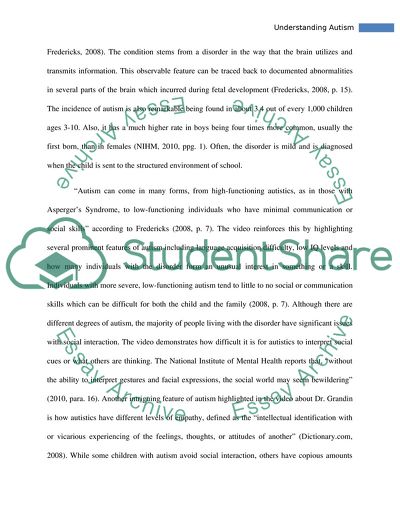Cite this document
(Understanding Autism: Thoughts on Grandins Thoughts on Autism Coursework Example | Topics and Well Written Essays - 1750 words, n.d.)
Understanding Autism: Thoughts on Grandins Thoughts on Autism Coursework Example | Topics and Well Written Essays - 1750 words. https://studentshare.org/psychology/1771046-autism-reflection-and-research
Understanding Autism: Thoughts on Grandins Thoughts on Autism Coursework Example | Topics and Well Written Essays - 1750 words. https://studentshare.org/psychology/1771046-autism-reflection-and-research
(Understanding Autism: Thoughts on Grandins Thoughts on Autism Coursework Example | Topics and Well Written Essays - 1750 Words)
Understanding Autism: Thoughts on Grandins Thoughts on Autism Coursework Example | Topics and Well Written Essays - 1750 Words. https://studentshare.org/psychology/1771046-autism-reflection-and-research.
Understanding Autism: Thoughts on Grandins Thoughts on Autism Coursework Example | Topics and Well Written Essays - 1750 Words. https://studentshare.org/psychology/1771046-autism-reflection-and-research.
“Understanding Autism: Thoughts on Grandins Thoughts on Autism Coursework Example | Topics and Well Written Essays - 1750 Words”. https://studentshare.org/psychology/1771046-autism-reflection-and-research.


